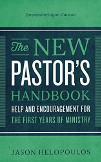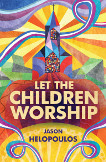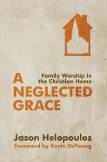
The Time and Manner of Family Worship
In the first post in this series we briefly considered the heart of family worship. In this post we turn our attention to the timing and manner of family worship.
The Timing of Family Worship
When thinking about the right time for family worship, don't be afraid to experiment with different times and settings in order to find out what works well for your family. This will also change as children grow up and as new members are added to the fold. For instance, morning family devotions may make a lot of sense during the summer when the kids are out of school (or if you homeschool). For us the evening seems to work best most of the time. With family worship being the only thing between the kids and their bedtimes, they tend to have a laser-like focus on the time we spend together. This also gives us a chance to focus on the older kids by putting the little girls to bed early and having a "grown-up" devotion time with deeper uninterrupted conversation.Frankly, we have never been able to maintain these gatherings on a daily basis. During a typical week, we gather for family worship four to five times a week. Parents of young children should expect that some days just don't work out the way you planned. Be gracious to yourself and your family.
The Manner of Family Worship
If you look forward to your family worship, your children will too. For that reason, you want to find a model for your time together that is engaging, efficient, and adaptable.
Group participation. We are talking about "family" worship so the family should be involved. Children love to participate as their age and abilities allow. Let them pick the songs, offer prayers, and ask and answer questions about the teaching. When they are old enough to read, let them read the passage. When we are doing a passage that has a parallel in their children's Bible, they can follow along and show the way the illustrator depicts the events of the story.
Resources:
-
Jesus Storybook Bible, Sally Lloyd-Jones (Zonderkidz, 2007)
-
Big Picture Story Bible, David Helm, Gail Schoonmaker (Crossway, 2010)
Play-acting. This may seem a bit odd, and trust me it totally is, but letting the children act out the biblical stories from the day's reading is a great way to teach the structure of the story. In order to act it out, they need to know the lines (or some hatchet job version thereof), the order of events, the significant details, and so on. Granted, this probably may not work with your teenagers, but your little ones will love it. We also tend to go through the story multiple times so that everyone can play each part. Did you ever notice that in the David and Goliath account, Saul is depicted away from the battlefield fretting over armor while David is shown sprinting to meet the giant? That is a contrast of characterization I had not noticed until I directed this scene in our living room.
Questions. Everyone likes to know the answer, and they love to see how the answers fit together to clarify a bigger truth. Sometimes the questions need to be simple; they may even seem obvious, like "Why were the Israelites afraid of Goliath?" "What would make Jesus so sad that he would cry?" or "Would God like the things the serpent was saying?" Some questions may get a more complicated or nuanced answers like, "How was King David different from King Saul?" or "What kind of king does God want for his people?" "Who is that king?" You might find that asking the right questions becomes the most difficult part of the gathering for you. A good question can make a point much better than merely stating it outright. Invest the time in your questions, and you will find yourself learning more too.
Storytelling. Everybody loves C.S. Lewis, and that is in large part due to his ability to represent biblical ideas through his stories about children having adventures in the fantasy land of Narnia. Practice telling stories to your children that give expression to the features of the gospel. Yes, storytelling is a gift, but it is also a skill. Think about basketball. Michael Jordan was born, but if you practice you can hold your own at the neighborhood court. Some people can spin a yarn without breaking a sweat, others need to practice. Start by reading the parables of Jesus with an eye for how he explains an idea through pithy narratives (yes, parables were also used to conceal). Read The Chronicles of Narnia. Read Pilgrim's Progress. Read them with your kids. (Our family loves the version of Pilgrim’s Progress by Gary Schmidt and illustrated by Barry Mozer [Eerdmans, 2008], but the older favorite is the Dangerous Journey: The Story of Pilgrim’s Progress [Eerdmans, 1985]). Then start weaving gospel themes into your bedtime stories. We have had some of the best talks about spiritual issues as we are doing tuck-ins.
Memorization. After all, Moses says to write the words on your hearts (memorize) so that you can teach them to your children (Deut 6:6). Children can memorize like bandits. We learned this when we spent a couple months reading through and memorizing Psalms 23 and 24. We put it to song, or something like a song. The end of Psalm 24 ("Lift up your heads, O gates!") sounded more like a cheerleading cheer because, well, that is kind of what it is. We were emboldened to come back and learn Psalm 110 a few months later. No, we don't do this all the time, but we did it for a period of time, and it was fun and edifying.
Resource:
For memorizing the Westminster Shorter Catechism, try Cardiphonia's musical arrangement of many of the questions.
Practicing Prayer. God's words to us are found in the Scriptures. Our words to God are found in our prayers. Our prayers should be as multi-faceted and varied as Scripture is, and so I find it particularly helpful to let Scripture set the agenda for prayer whenever possible. If the biblical story is about trusting in the Lord in a time of trial, pray about that. If it is about the glory of God in his mighty works, focus your prayers there. Do this by praying deliberately. We often talk about what we are going to pray before we pray, what words do we use, what is the point we want to communicate to God. We come up with little liturgies, like the one for repentance: "Lord, I confess that I did X. Please forgive me. By your Spirit, help me not to do X again, and help me to trust in you."
Routine. Speaking of liturgies. We do build in routine structures to our family worship. For instance, before we pray, I ask how, "How do we go into the presence of the king?" and they answer "With honor and respect." We close each night with a benediction. The liturgies highlight the continuity with what we have done in the past. We all need a bit of structure to remind us that what we are doing is not chaotic or haphazard; it has meaning and makes progress.
Establishing a habit of family worship begins with a willing heart, and there are many helps and tools to make worship God-honoring and effective. It need not be complicated. Start with a simple plan and set aside a little time, and watch family worship build into a family tradition that helps both children and parents walk with the Lord on all the days of the week.By the way, family worship can still be a blessing where only one parent is interested or able. A mother or father can gather the children together to worship the Lord together as a smaller group--after breakfast, before bed, after dinner--even if a spouse is not inclined to lead. Ultimately, we must leave it to the Lord to shepherd our families and bless our efforts to instruct them and enjoy him.
Related Resources
Dana Dirksen Songs for Saplings (Children's Catechism Albums)
Samuel Bagster Daily Light (Crossway)
Dr. Scott Redd is the president and an associate professor of Old Testament at the Washington, D.C. campus of Reformed Theological Seminary.



















 © Alliance of Confessing Evangelicals
© Alliance of Confessing Evangelicals


